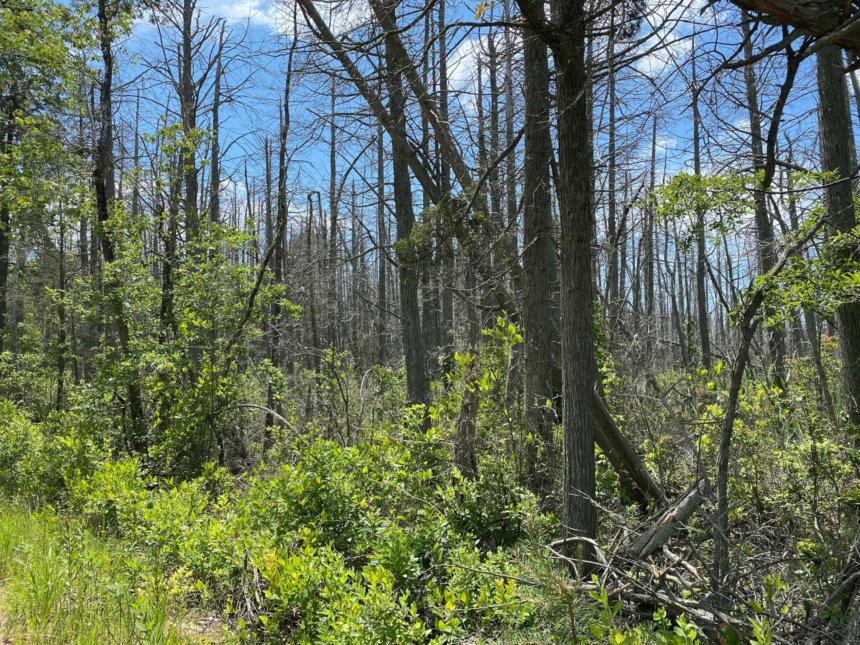Explore how ghost forests silently bear witness to climate change, causing sea levels to rise and coastal erosion. Learn about the profound environmental effects.
Introduction
Ghost forests, eerie collections of dead trees, attributing their existence not to the supernatural but to the looming threat of climate change. Serving as ominous indicators, these ghost jungle reflect environmental challenges amid rising sea levels and frequent extreme weather events. The article delves into their formation, the correlation with climate change, and explores potential solutions to alleviate their impact, shedding light on the urgent need for environmental awareness and action.
ALSO READ : Sea Monsters Of The Deep : Unraveling The Intriguing Mysteries Of The 16th Century
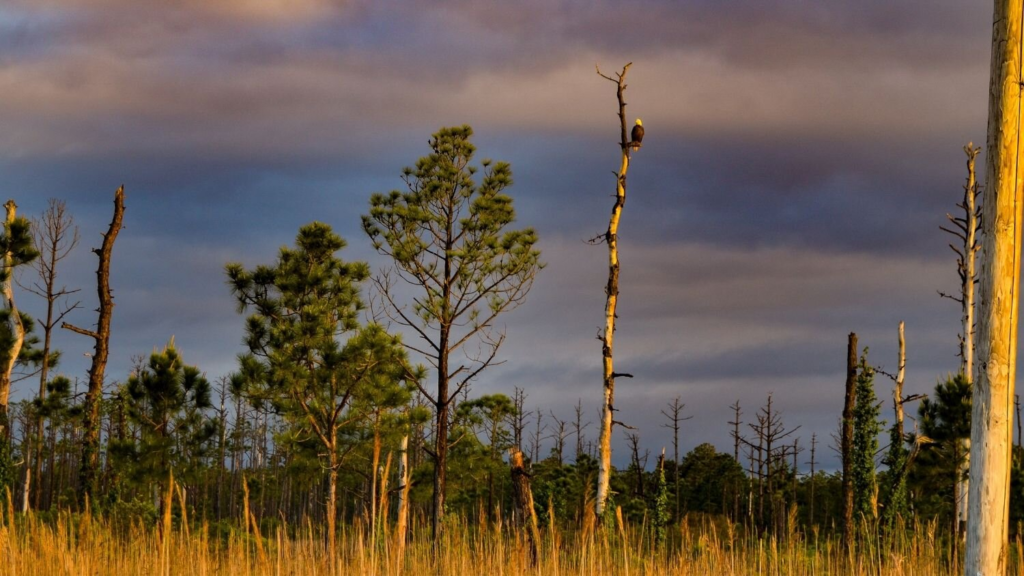
The creation of ghost forests
Ghost forests emerge when coastal lands are inundated by rising sea levels or catastrophic events like tsunamis. The intrusion of salty ocean water transforms once-vibrant forests into desolate landscapes of decaying trees. The salt content in the brackish marshy water is lethal to most trees, poisoning them over the course of decades. The haunting appearance of ghost jungle is accentuated by the fact that dead trees can stand for a decade or longer, adding to their eerie aura. Eventually, the marshy land succumbs to the encroaching waters, merging with the open sea.
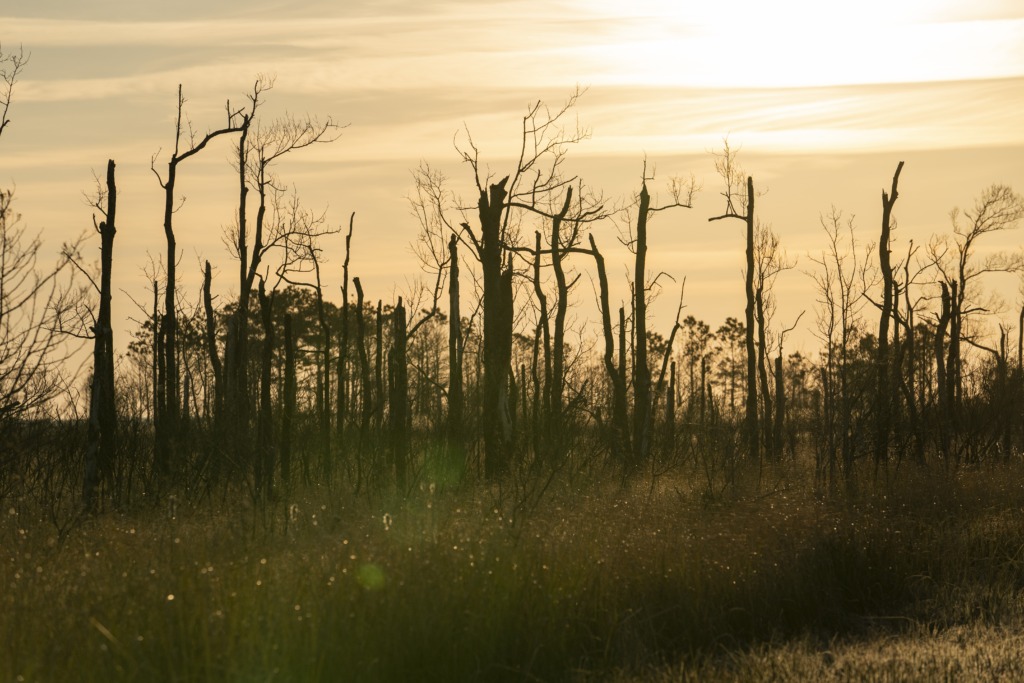
Global impact and threats to communities
The multifaceted consequences of ghost forests, emphasizing that their impact goes beyond their eerie appearance. The primary concern is the peril posed by rising sea levels, especially for communities situated in low-lying areas. Notably, native communities in Alaska have experienced the compulsion to relocate due to this phenomenon. The global implications are illustrated by nations like Kiribati, facing the daunting prospect of becoming uninhabitable within the next century.
Ghost jungle serve as poignant evidence of the swift depletion of crucial wetlands and upland woodlands. These ecosystems are not only vital for biodiversity but also function as economic assets, playing roles in timber production, agriculture, and acting as natural barriers against storm surges. The paragraph underscores the urgent need to address climate change to mitigate the far-reaching and interconnected challenges posed by the existence and transformation of ghost woodlands.
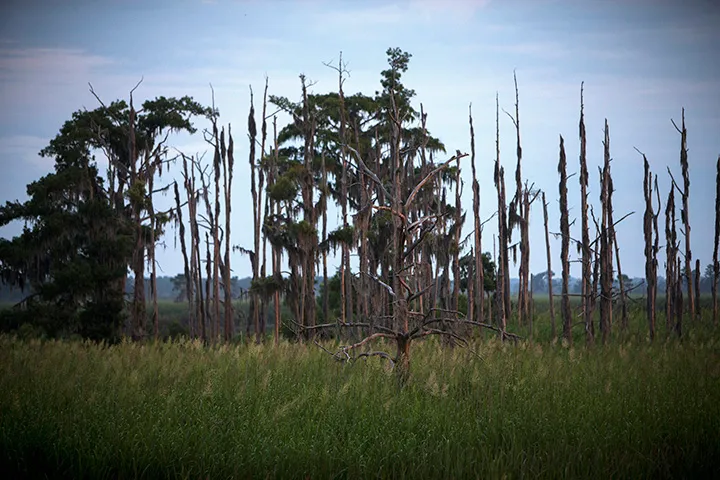
Climate change accelerator
The formation of ghost forests is not only a consequence but also a contributor to climate change. In coastal landscapes, ghost woodlands replace vital carbon sinks such as wetlands, forests, and mangroves. These ecosystems store large amounts of carbon, preventing its release into the atmosphere. However, when these ecosystems succumb to ghost woodland formation, the stored carbon is released, exacerbating worldwide warming. As sea levels continue to rise, this cycle may become a notable factor driving climate change.
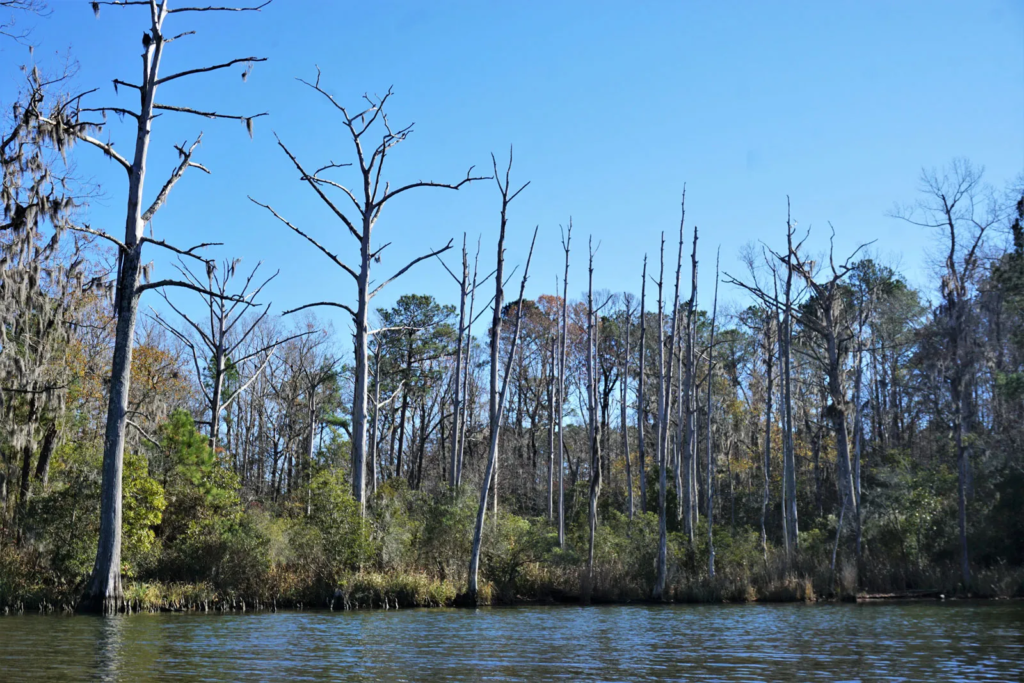
Solutions and mitigation
To address the root causes of ghost woodland formation, researchers propose several solutions. Planting trees along shorelines can slow erosion by stabilizing the soil with their root systems. Additionally, sediment deposition can elevate coastal marshes, allowing them to gradually move to higher elevations away from rising seas. Strategies such as preventing and controlling wildfires, along with reducing carbon footprints at individual and national levels, are crucial in averting sea level increase and mitigating the impact of ghost woodland on the climate.
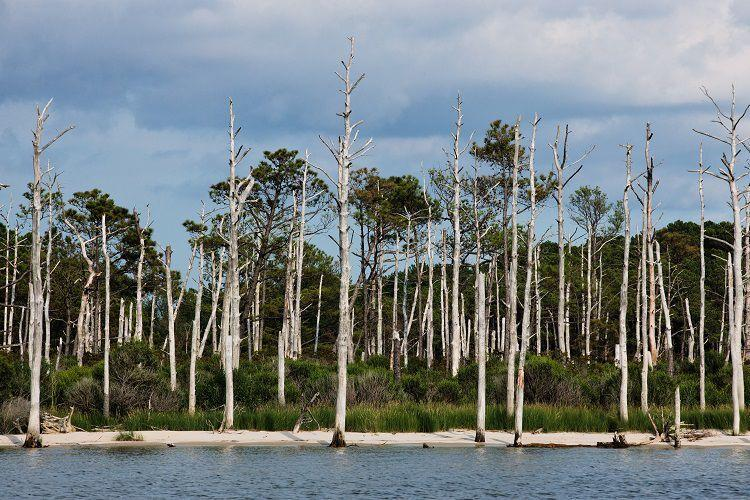
Conclusion
Ghost forests serve as haunting reminders of the urgent need to address climate change. As sea levels continue to rise, and extreme weather events become more frequent, the formation of ghost woodlands is likely to accelerate. By implementing proactive measures to protect coastal ecosystems and reduce carbon emissions, we can strive to prevent the expansion of ghost woodland and safeguard the health of our planet for future generations.
To explore more news : Click Here
ALSO READ : The Science Behind Sci-Fi : Separating Fact From Fiction







